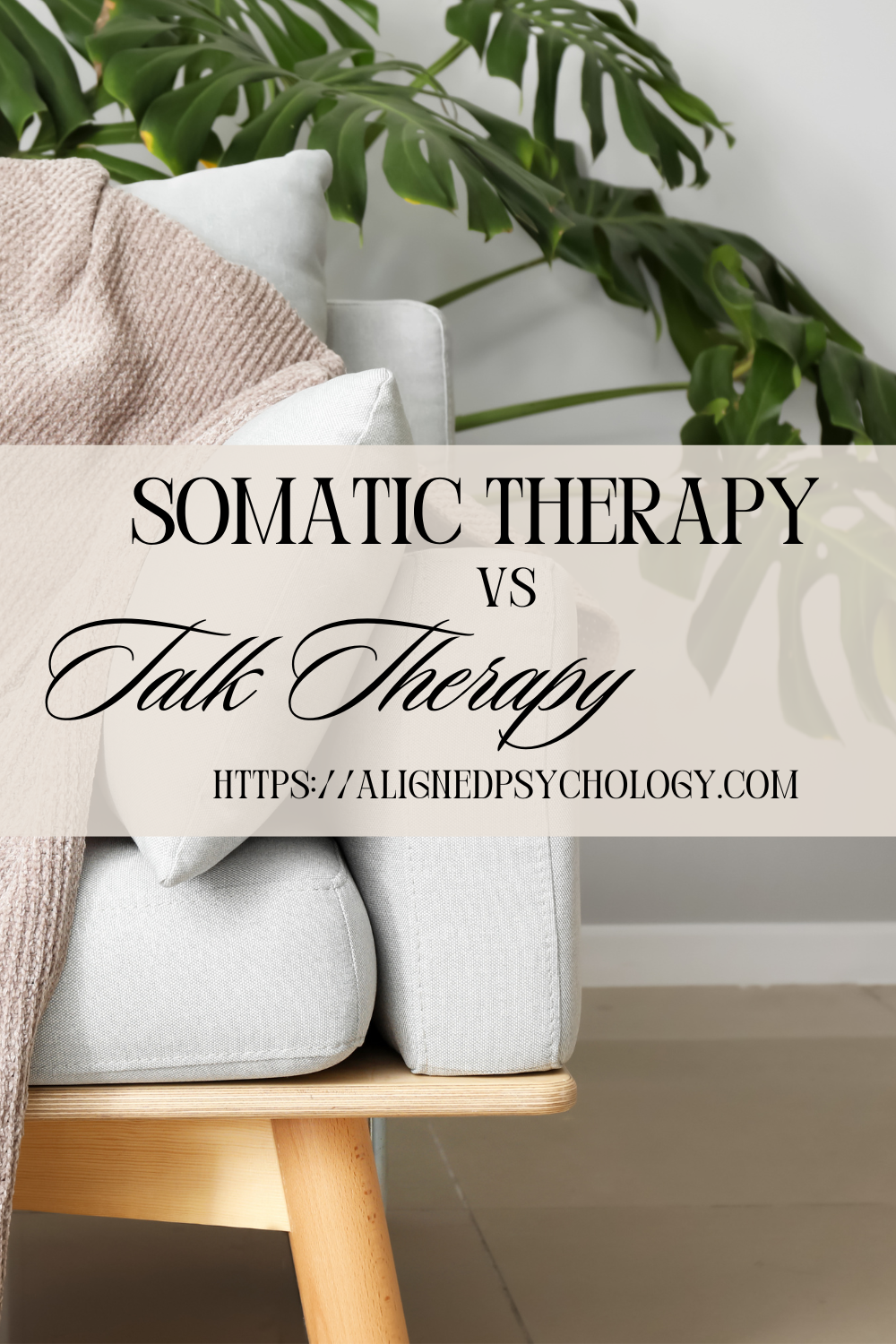Somatic Therapy vs. Talk Therapy: Finding the Right Path to Healing
Understanding the Differences and Choosing the Best Approach for You
When seeking mental health support, you'll find many therapeutic approaches and styles to choose from. Two common options are talk therapy and somatic therapy. While both aim to promote healing and well-being, they differ significantly in their methods and focus. This article will explore the key differences between somatic therapy and talk therapy, helping you determine which approach might be the best fit for your individual needs.
Understanding Talk Therapy
Talk therapy is a broad term encompassing various therapeutic techniques that involve verbal communication between a therapist and client. The primary focus of talk therapy is on exploring thoughts, feelings, and behaviors. Therapists use techniques such as:
- Cognitive restructuring: Identifying and changing negative thought patterns.
- Behavioral activation: Encouraging engagement in positive activities.
- Exploring past experiences: Examining how past events influence current functioning.
Talk therapy can be highly effective for addressing a range of mental health concerns, including:
- Depression
- Anxiety
- Relationship issues
- Grief and loss


Understanding Somatic Therapy
As we discussed in our previous post, somatic therapy is a body-centered approach that emphasizes the connection between the mind and body. It recognizes that trauma, stress, and unresolved emotions can be stored in the body, leading to physical symptoms and emotional distress. Somatic therapists use techniques such as:
- Grounding exercises: Helping clients connect with the present moment and their physical sensations.
- Breathwork: Using conscious breathing techniques to regulate the nervous system.
- Movement exercises: Facilitating the release of stored tension through physical movement.
- Somatic experiencing: A specific approach focused on releasing traumatic energy from the body.
Somatic therapy can be particularly helpful for individuals experiencing:
- Trauma and PTSD
- Chronic pain
- Physical symptoms with no medical explanation
- Difficulty connecting with their emotions
Which Therapy is Right for You?
Choosing between somatic therapy and talk therapy depends on your individual needs and preferences. Consider the following:
- Your primary concerns: If you're struggling primarily with thoughts and emotions, talk therapy might be a good starting point. If you experience physical symptoms or feel disconnected from your body, somatic therapy might be more beneficial.
- Your personal style: Some people prefer to process their experiences through talking, while others find it easier to connect with their bodies and sensations.
- Your history: If you have a history of trauma, somatic therapy might be particularly helpful in addressing the physical and emotional impact of those experiences.
It's also important to note that these two approaches are not mutually exclusive. Some therapists integrate elements of both talk therapy and somatic therapy into their practice, providing a more holistic approach to healing.

Key Differences Between Somatic Therapy and Talk Therapy
| Talk Therapy | Somatic Therapy | |
|---|---|---|
| Primary Focus | Thoughts, feelings, and behaviors | Bodily sensations and the mind-body connection |
| Method | Verbal communication, cognitive techniques | Body-based techniques, sensory awareness |
| Emphasis | Understanding and changing thought patterns | Releasing stored tension and trauma from the body |
| Approach | Top-down (mind influencing body) | Bottom-up (body influencing mind) |

Can You Combine Somatic Therapy and Talk Therapy?
Yes, combining somatic therapy and talk therapy can be highly effective. This integrated approach allows individuals to address both their thoughts and feelings as well as the physical manifestations of their experiences. For example, in a combined session, you might:
- Talk about a stressful event that occurred during the week (talk therapy).
- Then, notice where you feel that stress in your body (somatic awareness).
- Finally, use grounding or breathwork techniques to release the tension (somatic therapy).
This integrated approach can provide a more comprehensive and effective path to healing.
Finding a Qualified Therapist
Whether you choose talk therapy, somatic therapy, or an integrated approach, finding a qualified and experienced therapist is crucial. Look for therapists who are licensed and have specialized training in their chosen modality.
Choosing Your Path to Healing
Both somatic therapy and talk therapy offer valuable tools for healing and personal growth. By understanding the key differences between these approaches, you can make an informed decision about which path is right for you. If you're unsure, consulting with a mental health professional can help you explore your options and find the best fit for your needs.

ABOUT THE AUTHOR
Dr. Chelsea
Chelsea Levenson PhD, Clinical Psychologist, specializes in creating safe, trusting space for clients on their journey toward healing. She specializes in somatic therapy and improving the mind-body connection. She is trained in trauma-focused modalities including Hakomi Somatic Therapy, EMDR, and IFS. She believes self-compassion, reflection, and awareness are keys to create lasting change. She worked in private practice, and intensive trauma treatment settings, including residential, PHP, and IOP levels of care.
Thank you for being part of a community of humans that deeply cares about healing.
We are honored that you stopped by and hope our resources will continue to bring value to your life.
We are accepting new clients in California, and referrals are always appreciated.












